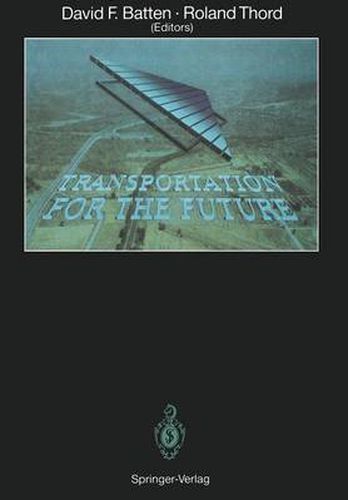Readings Newsletter
Become a Readings Member to make your shopping experience even easier.
Sign in or sign up for free!
You’re not far away from qualifying for FREE standard shipping within Australia
You’ve qualified for FREE standard shipping within Australia
The cart is loading…






This title is printed to order. This book may have been self-published. If so, we cannot guarantee the quality of the content. In the main most books will have gone through the editing process however some may not. We therefore suggest that you be aware of this before ordering this book. If in doubt check either the author or publisher’s details as we are unable to accept any returns unless they are faulty. Please contact us if you have any questions.
During the seventies and eighties, the industries associated with the transportation of goods and people have been exposed to some profound changes. The quickening pace of technological change - with its growing emphasis on telecommunications, knowledge-handling capacity, and air transportation - is increasing the discrete character of the world economy. Thus the network structure of global development patterns is becoming more important, with metropolitan centres as key nodes and rapid transportation routes as key links. In this evolutionary situation, changes in the preferred mix of transport modes are inevitable. The faster and more direct modes will be favoured, individually and in combination, and there will be an increasing interest in transportation policies and the provision of infrastructure. This volume contains a collection of innovative papers presented at the First International Conference on Transportation for the Future, held in Soedertalje, Sweden in July 1988. Twenty industry leaders and prominent scientists from Europe, USA and Japan present their views about the ongoing transformation of production and distribution systems among firms striving for Just-In-Time methods, economies of scope, and a fully integrated approach to their economic activities. The future of passenger travel and infrastructure are also discussed. The resulting book presents a surprisingly consistent picture of how the transportation industries of the industrialized nations may be expected to grow and change in a long-term perspective.
$9.00 standard shipping within Australia
FREE standard shipping within Australia for orders over $100.00
Express & International shipping calculated at checkout
This title is printed to order. This book may have been self-published. If so, we cannot guarantee the quality of the content. In the main most books will have gone through the editing process however some may not. We therefore suggest that you be aware of this before ordering this book. If in doubt check either the author or publisher’s details as we are unable to accept any returns unless they are faulty. Please contact us if you have any questions.
During the seventies and eighties, the industries associated with the transportation of goods and people have been exposed to some profound changes. The quickening pace of technological change - with its growing emphasis on telecommunications, knowledge-handling capacity, and air transportation - is increasing the discrete character of the world economy. Thus the network structure of global development patterns is becoming more important, with metropolitan centres as key nodes and rapid transportation routes as key links. In this evolutionary situation, changes in the preferred mix of transport modes are inevitable. The faster and more direct modes will be favoured, individually and in combination, and there will be an increasing interest in transportation policies and the provision of infrastructure. This volume contains a collection of innovative papers presented at the First International Conference on Transportation for the Future, held in Soedertalje, Sweden in July 1988. Twenty industry leaders and prominent scientists from Europe, USA and Japan present their views about the ongoing transformation of production and distribution systems among firms striving for Just-In-Time methods, economies of scope, and a fully integrated approach to their economic activities. The future of passenger travel and infrastructure are also discussed. The resulting book presents a surprisingly consistent picture of how the transportation industries of the industrialized nations may be expected to grow and change in a long-term perspective.